Last Updated on May 30, 2024
INTRO: The success of Lethal Weapon 2 had proven there was a large audience that was eager to follow the continuing adventures of LAPD sergeants Riggs and Murtaugh. Warner Bros., franchise director Richard Donner, and stars Mel Gibson and Danny Glover were committed to giving the people more of what they obviously wanted. Lethal Weapon 3 reached theatres three years after its predecessor. And while this sequel wasn’t as impressive on a story level as the previous two films, it still delivered a good amount of action and fun Riggs and Murtaugh banter. So the audience made it the most successful entry in the series. Lethal Weapon 3 may not be the best Lethal Weapon, but it had the biggest box office. And it’s time for it to be Revisited.
SET-UP: The first Lethal Weapon had started as a spec script written by Shane Black. Director Richard Donner then brought Jeffrey Boam in to perform rewrites that lightened the tone and reduced the violence. Black was hired to write the initial script for Lethal Weapon 2, and while Boam ended up doing substantial rewrites on that one, Black and collaborator Warren Murphy did provide the basic story for the film. So when it came time to push Lethal Weapon 3 into development, Black was the first writer to be contacted. And he declined to be involved. He didn’t see any reason to keep telling stories about Riggs and Murtaugh, despite the financial reward. So Donner and producer Joel Silver turned to Boam once again.
At Donner’s suggestion, Boam came up with a story that has a ticking clock element to it. Roger Murtaugh is eight days away from retirement at the beginning. The story plays out over the course of what is meant to be his final week with the LAPD. A week he hopes will be as easy and peaceful as possible. But his partner Martin Riggs keeps dragging him into trouble. In the opening sequence, they check on a report of a bomb being spotted in a car parked in the garage of an office building. Riggs and Murtaugh are homicide detectives and no one has been killed here, so this isn’t their job. The building has already been evacuated, Bomb Squad is on its way to deal with the explosive. But Riggs convinces Murtaugh to go into the building with him and look for the bomb. And then Riggs decides that he is the one who should try to defuse it. While he has displayed some knowledge of bombs from his time in the Special Forces, he cuts the wrong wire on this one. The explosion goes off early, the building crumbles, and Riggs and Murtaugh are to blame. So they’re busted down to patrol duty.
While they’re on patrol, they witness an attempted robbery of an armored truck. One of the criminals escapes during the ensuing action sequence. The other is apprehended. But they both end up dead, murdered by former police officer Jack Travis, who has gotten into the construction business, but that’s not how he pays his bills. He has been stealing confiscated weapons and ammo from police lock-up and selling them, putting them back out on the streets. Arming gang members. Which is another part of his criminal enterprise that Riggs and Murtaugh accidentally discover. Murtaugh is just trying to cook Riggs a delicious burger at a food stand when Riggs notices gang activity nearby. A gunfight breaks out, during which Murtaugh kills a gang member armed with an automatic weapon. The gang member happens to be an old friend of Murtaugh’s teenage son Nick. And the weapon he was shooting at Riggs and Murtaugh with was supposed to be in lock-up.
The case of the missing weapons is being investigated by Internal Affairs. And in Boam’s early drafts of the script, the lead investigator was a man who was Riggs’ equal. Someone just as crazy and just as skilled in martial arts as Riggs is. Donner liked the character and wanted to keep their presence and personality in the script, but with a major change: he asked that they be rewritten as a woman Riggs could fall in love with. Boam already had Riggs finding a girlfriend in those early drafts: Murtaugh’s daughter Rianne. She had developed a crush on Riggs as soon as she saw him in the first Lethal Weapon. But she was only a teenager at that time. Now that she was in her early twenties, Boam was going to give her the chance to turn her crush into something more. Donner preferred the idea of Riggs falling for the Internal Affairs investigator instead. So that’s what happens in the finished film, but there are scenes left over from earlier drafts where Murtaugh suspects there’s something going on between Riggs and Rianne.
The Internal Affairs investigator became a woman named Lorna Cole in a draft of the script Boam wrote with The Karate Kid creator Robert Mark Kamen. A draft that happened after Boam was fired from the project and then re-hired. Boam said that, Lorna Cole aside, the second draft he turned in was almost identical to the finished film. But after reading that draft, Donner said he wanted to go in a different direction with a different writer. So Boam was fired and Donner brought in Robert Mark Kamen, who had done uncredited rewrites on Lethal Weapon 2. In fact, Kamen has said he was responsible for making the villainous diplomat in that film South African. After Kamen worked on the Lethal Weapon 3 script for a while, the decision was made to bring Boam back onto the project. At first, Boam and Kamen were forced to write together. Then Boam demanded that he be allowed to work on the script alone. And while he would have liked to have finished the script before filming began, Donner kept him doing rewrites throughout production. He wasn’t the only writer working on the script in late stages, either. Carrie Fisher was also brought in to do some revisions, with a focus on the Lorna Cole scenes.
Fisher didn’t receive credit for her work on Lethal Weapon 3, but Boam being replaced by Kamen and then replacing Kamen led to the film sporting a strange list of writing credits. Although he was uncredited on part 2, Kamen wanted to be credited on part 3. So he got his credit. And the Writers Guild decided Boam should be credited three times. Once for the story, which he established in his first two drafts. Once for the screenwriting his did on his own. And again for the draft he wrote with Kamen. That’s how you get the credit block of Story by Jeffrey Boam, Screenplay by Jeffrey Boam and Jeffrey Boam & Robert Mark Kamen. Boam thought this was ludicrous and that he should have been the only credited writer. He told The Occasional Critic Don Porter, “It’s a mind-boggling credit that makes a mockery out of the concept of authorship.”
One of the latest additions to the script was the character of Leo Getz, who had been played by Joe Pesci in Lethal Weapon 2. Boam’s script included a line that said Leo had moved away to New York, but Donner wanted him in the movie. So a few scenes were added where we see that Leo has left banking and money laundering behind and gotten into real estate. He’s trying to sell Murtaugh’s house for him, and is able to help dig up information on the bad guys. He also tries to go out into the field with Riggs and Murtaugh again, but that doesn’t work out for him. Leaving him with a gunshot wound in a hockey rink. And flat tires on his car.
Gibson, Glover, and Pesci were on board to reprise their roles. Darlene Love, Traci Wolfe, Damon Hines, and Ebonie Smith were brought back as Murtaugh’s wife and children. Steve Kahan would return as police Captain Ed Murphy, who briefly gets mixed up in the action this time. Mary Ellen Trainor appears as police psychologist Stephanie Woods. The biggest new roles to cast this time were Jack Travis and Lorna Cole. Online trivia claims that A-listers like Robert De Niro, Jack Nicholson, Michael Keaton, and more were considered for Travis. But the role went to character actor Stuart Wilson. Similarly, the Internet claims that Jodie Foster, Michelle Pfeiffer, and even Winona Ryder – who was only twenty at the time – were up for the role of Lorna. But the job went to the lesser known Rene Russo, who was initially disregarded by Donner because he thought she was lacking edge. But she lobbied for and got a second audition where she was able to read four scenes with Gibson. And during that audition, she proved she could project the toughness required for Lorna. She was then given a month of martial arts training so she could show off some moves in the character’s fight scenes.
Lethal Weapon 3 had a budget of thirty-five million, a five million increase from the budget of part 2, which had twice the budget of the first film. The production also benefited greatly from three different cities having structures that needed to be demolished. A new City Hall building had been constructed in Orlando, Florida and the city had to get rid of the old building. Warner Bros. came in and paid for the demolition so they could film it for the beginning of the movie. In a post-credits scene, Riggs and Murtaugh arrive at the scene of another bomb report just in time to see the building fall. They got out of there quickly so they don’t get in trouble again. The crumbling building in that scene was the former Soreno Hotel in Saint Petersburg, Florida. Oddly, Riggs and Murtaugh never show any interest in figuring out the identity of this mad bomber who’s blowing up buildings all over their city.
The fiery climactic action sequence takes place in an unfinished housing development Jack Travis has been working on. This location was a real, abandoned housing development in Lancaster, California that had been sitting there, being an eyesore for a couple years. City officials were very happy when they heard that Warner Bros. wanted to come in and mess things up. They were hoping the filmmakers would knock the whole thing to the ground. But Donner and his crew couldn’t be as destructive as it appeared. They had to make sure they could film multiple takes in these structures.
REVIEW: Lethal Weapon 3 delivers everything you expect from a Lethal Weapon movie. But the story is a bit lacking in this one, and the thrills aren’t as thrilling. The intensity is gone. Boam felt the film came up a bit short because everyone behind the scenes had a different idea of what made the franchise work. Everyone knew the chemistry between Gibson and Glover was vital. But the writer believed that Riggs and Murtaugh still had to be part of an interesting, action-packed story. Donner wanted to focus on the characters’ interactions at the expense of everything else. He just wanted to take an episodic jaunt through what may be Riggs and Murtaugh’s last week together as partners.
This means he didn’t care at all about the villain’s side of the story. And the fact that not even the director cared about Jack Travis really comes through in the film. Everything involving Travis feels like an afterthought. An obligation, because an action movie has to have a bad guy. He’s never as intriguing as the villains in part 2. Never comes off as being as dangerous as the villains in part 1. There are attempts to make him seem like a serious threat. He shoots Leo. He forces Captain Murphy to help him get into the lock-up. He kills a rookie cop Riggs and Murtaugh have befriended. He’s to blame for selling the gun that ends up in the hands of Nick’s friend. He injures Lorna. But even with all that going on, he never manages to be a great villain.
With each sequel, the series leans further into comedy. Part 3 is very lighthearted most of the time, but also features some very serious moments. This causes some jarring tonal shifts. The characters are yukking it up one minute, then a devastating death will occur. Being forced to kill Nick’s gang member friend has a major impact on Murtaugh. So much that he becomes a drunken mess. Then Riggs visits him and they’re laughing again within minutes. That quick visit makes things a lot better for Murtaugh – but on the way to the resolution, we do get an excellent emotional scene. Where we see just how much Riggs and Murtaugh care about each other. It’s a moment that may bring tears to your eyes.
Although Donner mainly cared about the Riggs and Murtaugh scenes, Murtaugh drops out of the film for nearly twenty minutes after that unfortunate shooting. Riggs is too busy to miss him much. Those twenty minutes are used to build up the relationship between Riggs and Lorna. Including the famous scene where they fall for each other while comparing scars. A romantic play on a moment from Jaws. Riggs had found love in Lethal Weapon 2, but that didn’t turn out well for his significant other. And that relationship never seemed to have much depth to it. The Riggs and Lorna pairing works much better, and Gibson and Russo did a great job of playing their romance. Their characters are equals, and you understand why they’re drawn to each other.
Animal lovers will also fall for Riggs more during his time with Lorna. Following a lead, they end up at a location guarded by a Rottweiler. And Riggs convinces Lorna not to harm the threatening animal. He can shoot people all day, but he can’t bring himself to hurt a dog. So he makes friends with the Rottweiler, bonding over their shared love of dog biscuits. Which Riggs has been chowing down on to distract him from his nicotine addiction. When Riggs and Lorna cross paths with henchmen and bullets start flying, Riggs makes sure the dog is safe and takes it with him. Riggs and Murtaugh also save a cat from the exploding building at the beginning of the movie. Their care for animals makes these guys even more likeable.
Lethal Weapon 3 isn’t on the same level as the two previous movies. But it’s nice to spend time with Riggs and Murtaugh again, and the story is just good enough to scrape by. It’s serviceable. Boam had a terrible time putting together the script and seemed to know that it had come out lacking. But he could also see that the end result was a decent action comedy people could have fun watching. As he said to The Occasional Critic, “I’m happy with it because I think an audience likes it. I feel like I’ve seen the dark side and out of it has come this frivolous piece of entertainment that causes people to laugh and be happy. And I think, ‘I guess it was worthwhile. I guess it works, I guess it’s okay.’ It’s not a great piece of filmmaking … but people enjoy themselves when they’re watching it. So I feel like we’ve succeeded. Working on this movie made me feel that the pain and misery of the experience would be translated to the screen. And it wasn’t. The people who watch it have no knowledge of how hard it was to get what was on there. Or how frustrated we were in not getting something up there. They just see it and take it at face value. They want to be entertained, they want to like it, and we have given them something I think is enjoyable for two hours. I think they will feel they’ve gotten their money’s worth and the time was well-spent.”
LEGACY/NOW: The film does have the reputation of being a lesser sequel, and critics weren’t nearly as pleased with this one. While the reviews of Lethal Weapon and Lethal Weapon 2 add up to eighty percent and eighty-two percent fresh ratings on Rotten Tomatoes, Lethal Weapon 3 gets a rotten splat. Only fifty-eight percent of the reviews are positive. But being slightly underwhelming certainly didn’t hinder its success. A whole lot of movie-goers showed up to spend their time and money on Lethal Weapon 3 when it was released on May 15th, 1992.
Domestically, the first Lethal Weapon had made sixty-five million dollars. The international release added another fifty-five million, so the film ended up with a total of one hundred and twenty million. Lethal Weapon 2 did much better. It earned one hundred and forty-seven at the domestic box office, with international numbers bringing it to a total of two hundred and twenty-seven million. Lethal Weapon 3 fell just short of part 2 domestically, earning a little under one hundred and forty-five million. But the international numbers were even bigger on this one, boosting it to a total of three hundred and twenty million. That’s a number the next sequel couldn’t reach. So Lethal Weapon 3 is the box office champion of the franchise. It was the fifth most profitable film of 1992, and the second most successful film of the summer. Bested only by Batman Returns.
As with all of the Lethal Weapon movies, the third film was also a success on home video. And, like its predecessors, it received an extended cut release that was marketed as a director’s cut. Even though Donner wasn’t always pleased with the scenes these extended cuts put back in. The extended cut of Lethal Weapon 3 does feature an extra scene that was welcome: one where Rianne stops by Riggs’ trailer to talk to him about her troubled father. And we see Riggs hanging out with both his dog Sam from the previous movies and the Rottweiler he adopts in this one. For one thing, it’s just good to know that Sam is still around. But this scene always should have been in the movie because it gets mentioned when Riggs goes to check on Murtaugh. Murtaugh is enraged to hear that Rianne was at Riggs’ trailer, because he suspects that Riggs and Rianne are hooking up. If the scene had been in the movie, the audience would know exactly what happened when Rianne stopped by Riggs’ place. Murtaugh has no reason to be upset.
This movie was so successful, Warner Bros. decided to reward Richard Donner, producer Joel Silver, and Mel Gibson by inviting them to a celebratory lunch. Where they were each going to be given the surprise gift of a brand new Land Rover. The three vehicles were purchased and ready to be gifted. But Donner told Warner Bros. he was going to invite Danny Glover, Joe Pesci, Rene Russo, and Jeffrey Boam to the dinner as well. So the studio had to scramble to buy four more Land Rovers to give to the four extra guests. Years later, studio head Robert A. Daly would say, “It cost us three hundred and twenty thousand dollars to buy those Land Rovers, and we were criticized left and right for the expense. Do you know what it got us? Lethal Weapon 4, which made two hundred and eighty-five million.”
Donner, Gibson, Glover, Pesci, Russo, and – for a while – Boam did all return for Lethal Weapon 4, which didn’t come along until six years after part 3. Even though the filmmakers had years to develop that sequel, it ended up being a very rushed production. It wasn’t particularly well-received by fans, but it did make Jet Li a star in the United States. And we’re going to be looking back at Lethal Weapon 4 in the next episode of Revisited.






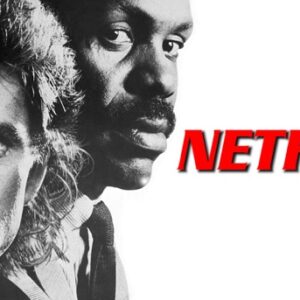
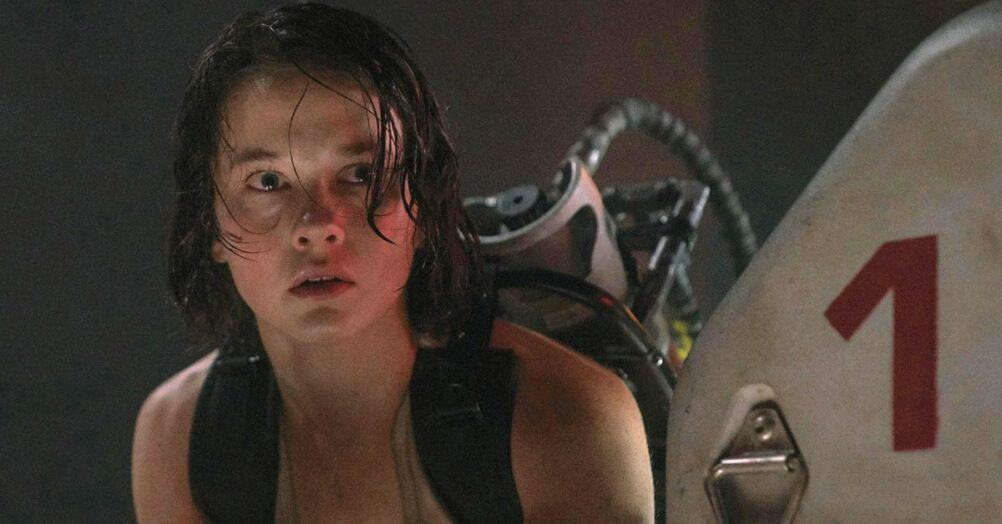


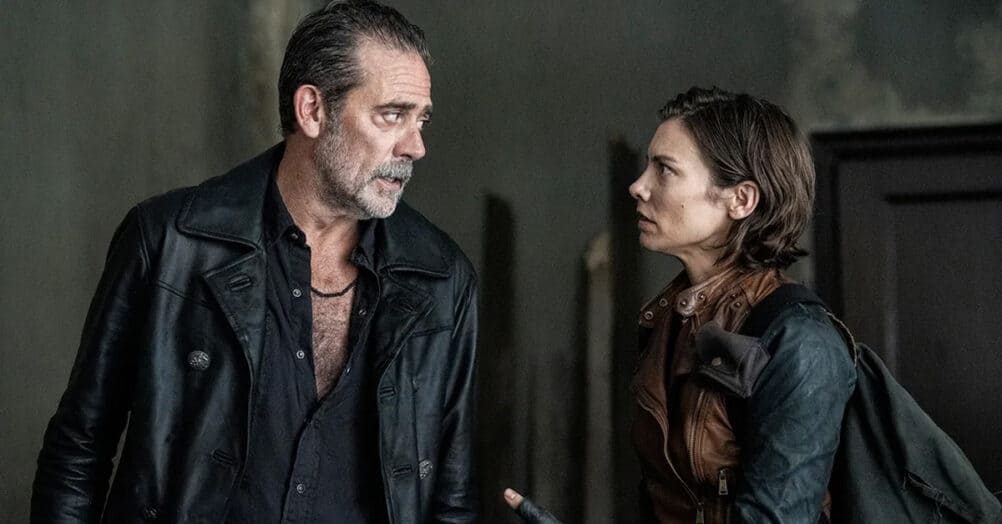
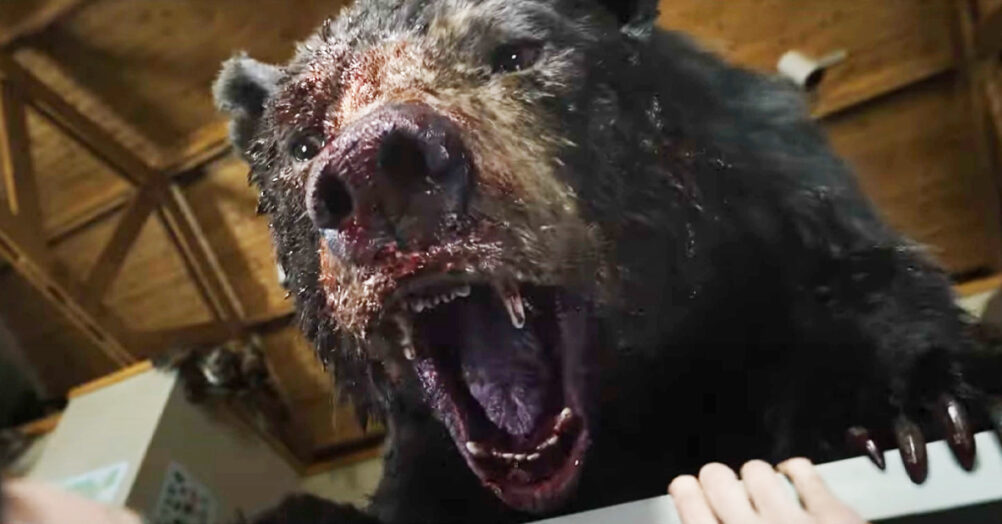




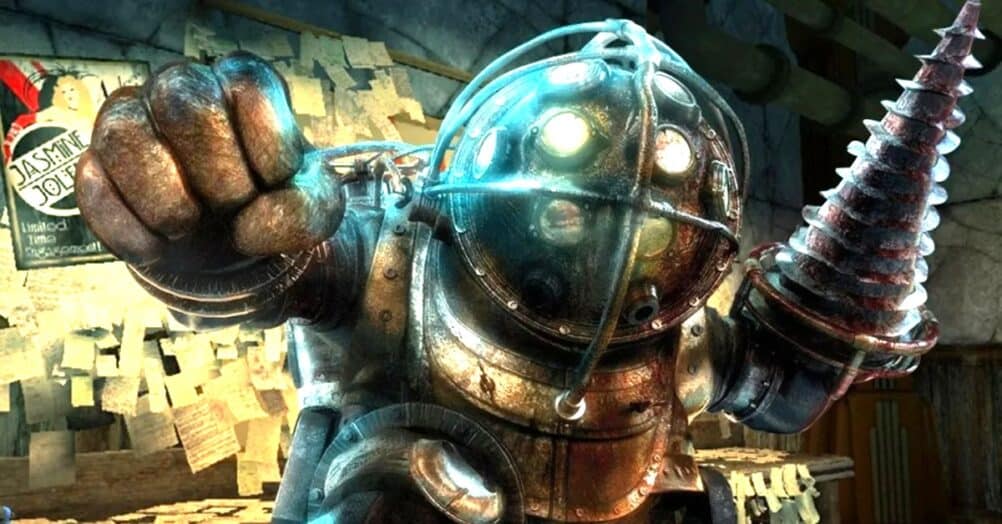
Follow the JOBLO MOVIE NETWORK
Follow us on YOUTUBE
Follow ARROW IN THE HEAD
Follow AITH on YOUTUBE